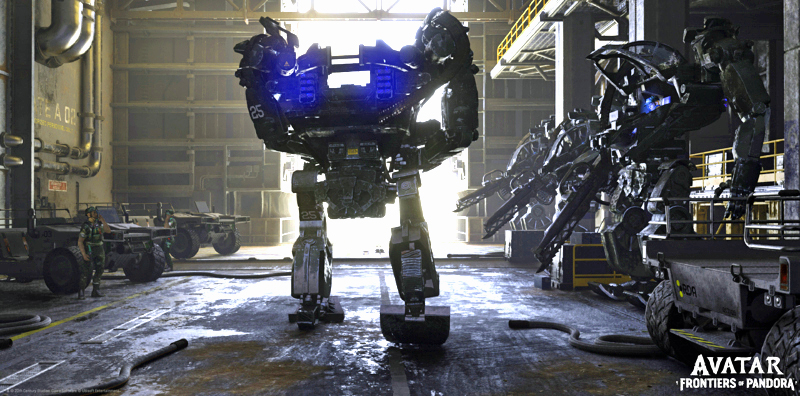
The “Avatar” video game plants new stories, hardware and characters.
The groundwork for a multimedia “Avatar” universe is coming into focus from Walt Disney Studios. Merchandise licensee Ubisoft Entertainment just unveiled “Avatar: Frontiers of Pandora,” a first-person video game that fleshes-out the sci-fi epic’s far-away world.
The source sci-fi movie “Avatar” is the all-time box-office champ grossing $760.5 domestically (and $2.85 billion worldwide that includes domestic) since its 2009 theatrical release by 20th Century Fox Pictures, which Disney bought in 2019. The original was rated PG-13. Now in charge of the franchise, Disney is talking four sequels, hoping to propel “Avatar” to a “Star Wars” like franchise (Disney owns the “Star Wars” property through a separate acquisition).
A Ubisoft announcement says that “Frontiers of Pandora” is “developed exclusively for the new generation of consoles and PC [bringing] to life the alluring world of Pandora with all of its beauty and danger in an immersive, open world experience. In this new, standalone story, play as a Na’vi and embark on a journey across the Western Frontier, a never-before-seen part of Pandora [exploring] a living and reactive world inhabited by unique creatures and new characters.”
The new world (Pandora is the planet in “Avatar”), and new creatures and machines make this video game adaptation a “transmedia” initiative, which is creating new content and story lines from a well-known source. Disney and filmmaker James Cameron’s Lightstorm Entertainment developed with Ubisoft, which is a leading video game company that is based in France. Ubisoft’s well-known titles include “Assassin’s Creed” and the Tom Clancy espionage strategy games.

The new video game builds on the original “Avatar’s” lush scenery and exotic creatures.
The upcoming “Avatar 2” movie is dated for domestic theatrical premiere Dec. 16, 2022 (so nearly a year-and-a-half away), and this sequel has been an on-and-off affair for years. Though “Avatar” is the all-time box-office champ, the property didn’t leave a deep imprint in pop culture, which Disney plans to remedy going forward.
“The Na’vi are incredibly on-the-nose, but the real reason their struggle doesn’t stick, I think, is because we’re only exposed to the conflict between natives and colonizers, without any understanding of what life was like before their arrival,” says a Forbes.com article by Dani Di Placido. “Think of how, for example, ‘Star Wars: A New Hope’ managed to tease the dense history of its universe, without going into details. The lowly status of the two droids tells us something about that world, as does Obi-Win’s offhand mention of the mysterious ‘Clone Wars,’ as well as the implied conflicts and complications between the varying factions which inhabit the ‘Star Wars’ universe.”
Let me add that the plot is thin in the original 2009 “Avatar.” It’s simply a greedy business enterprise wants to mine minerals in Pandora, which brings conflict the planet’s Na’vi humanoid inhabitants. Not a lot of nuances in that. Meanwhile, back here on earth, drill down deeper on that plot and realize that modern conveniences require extracting natural resources … otherwise no “Avatar” movies, for example.

Regarding “Avatar,” no definitive word on the “Avatar” ecosystem, but it’s been in development for 10 years. Besides video games, expect licensed merchandise adaptations in digital media, books, magazines, cell-phone content, toys, augmented reality experiences, virtual reality digital media, physical jewelry, fashion and the like to express and extend the property. Disney and Cameron’s Lightstorm clearly have big plans to build out a brand universe on their To Do lists to support four sequel theatrical films.
Explains the third edition of “Marketing to Moviegoers”: “The creative process for transmedia typically starts with establishing the concise log-line, which is a brief description of the core property and story. Then an overview is created for the broad universe of the story, which should lay the foundation creating new avenues for later transmedia narratives. Next, individual characters should be fleshed out. This whole process should generate a big ‘bible’ running one hundred to four hundred pages of single-spaced text.”
In 2017 before the Disney acquisition, 20th Century Fox said that four “Avatars” would be produced back-to-back, and the rumored price tag was $1 billion.
Related content:
Leave a Reply